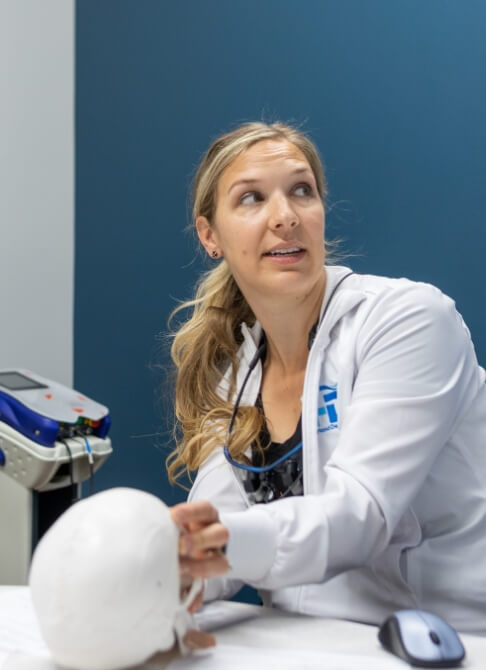

Do you find yourself frequently waking up gasping for air? Have you been experiencing chronic migraines and fatigue that seems unexplainable? These are some of the most common signs of a condition known as sleep apnea. Dr. Hyland has received specialized training in sleep apnea therapy to help relieve patients’ symptoms and improve their overall quality of life and wellbeing. Read below to learn about some of the available options for sleep apnea thearpy in our Mankato, MN dental office.

Based on your at-home sleep testing results (or if you’ve been previously diagnosed with obstructive sleep apnea), we can recommend an EMA or Opti sleep appliances that are customized just for you. Whenever you wear your appliance as you sleep, it will help expand your airway and improve your oxygen flow.

OptiSleep is another custom oral appliance that can help reduce snoring and instances of apnea. The slim device is made of a durable, stable material that still allows patients to open and close their mouth naturally, which makes it highly comfortable! The material is milled out professionally, and it is guaranteed to remain crystal clear and not show signs of wear as quick as a traditional appliance. Plus, the entirely digital creation process means that patients won’t have to deal with unpleasant physical impressions.
Head, neck, and jaw pain is typically associated with a common condition known as TMJ dysfunction, or TMD. Visit our dental office for a thorough examination to find out if TMJ therapy will be able to provide you with lasting relief.
Learn More About TMJ/TMD Therapy

If you are struggling to get the high-quality rest that your body needs to function optimally, our team is eager to help. Before you book an appointment, though, you might want to know more about obstructive sleep apnea (OSA) and how to manage it. To assist you, we have put together a list of answers to some FAQs about this condition. If your specific questions are not addressed here, feel free to reach out to us directly.
No, not everyone who snores has sleep apnea, and not everyone with sleep apnea snores. With that being said, it is important to note that these two things are often connected.
Snoring occurs when air moves past tissues in the throat, causing them to vibrate. If those tissues are too loose, or the airway is narrow, they could actually block the airway altogether, causing the apneas (periods when a person is not breathing) that are characteristic of OSA.
Occasional, light snoring is usually nothing to worry about. However, if someone snores frequently and heavily, they may need to see a medical professional to find out if they have OSA.
Sleep apnea is not self-diagnosable. However, you can and should monitor the quality of your sleep, especially if you have been feeling overly tired lately. For example, you could keep a sleep journal that tracks your bed times, wake times, how many times you wake up each night, and how you feel upon waking. You could also use a smart watch to monitor the quality of your sleep. Your doctor can use that data to determine if you should undergo an official sleep test.
A dentist can spot signs and symptoms of sleep apnea. For example, they can identify issues in your mouth and throat that may contribute to nighttime breathing problems. However, they cannot provide an official OSA diagnosis. They can connect you with a sleep physician who can arrange for you to undergo testing.
A sleep test, also called a sleep study, involves the use of sophisticated machinery that will monitor you while you sleep. The data from the test can reveal whether you have a sleep disorder and how severe the condition is.
After you receive a diagnosis, a dentist can provide treatment.
In some cases, OSA occurs because there is extra fat around the neck, placing pressure on the airway and contributing to breathing problems during sleep. Extra abdominal fat may also play a role in OSA. If you are obese, it is possible that shedding some pounds could reduce or eliminate your symptoms.
However, it is important to note that obesity is just one risk factor for OSA. OSA can afflict people of all different sizes, shapes, and body compositions.